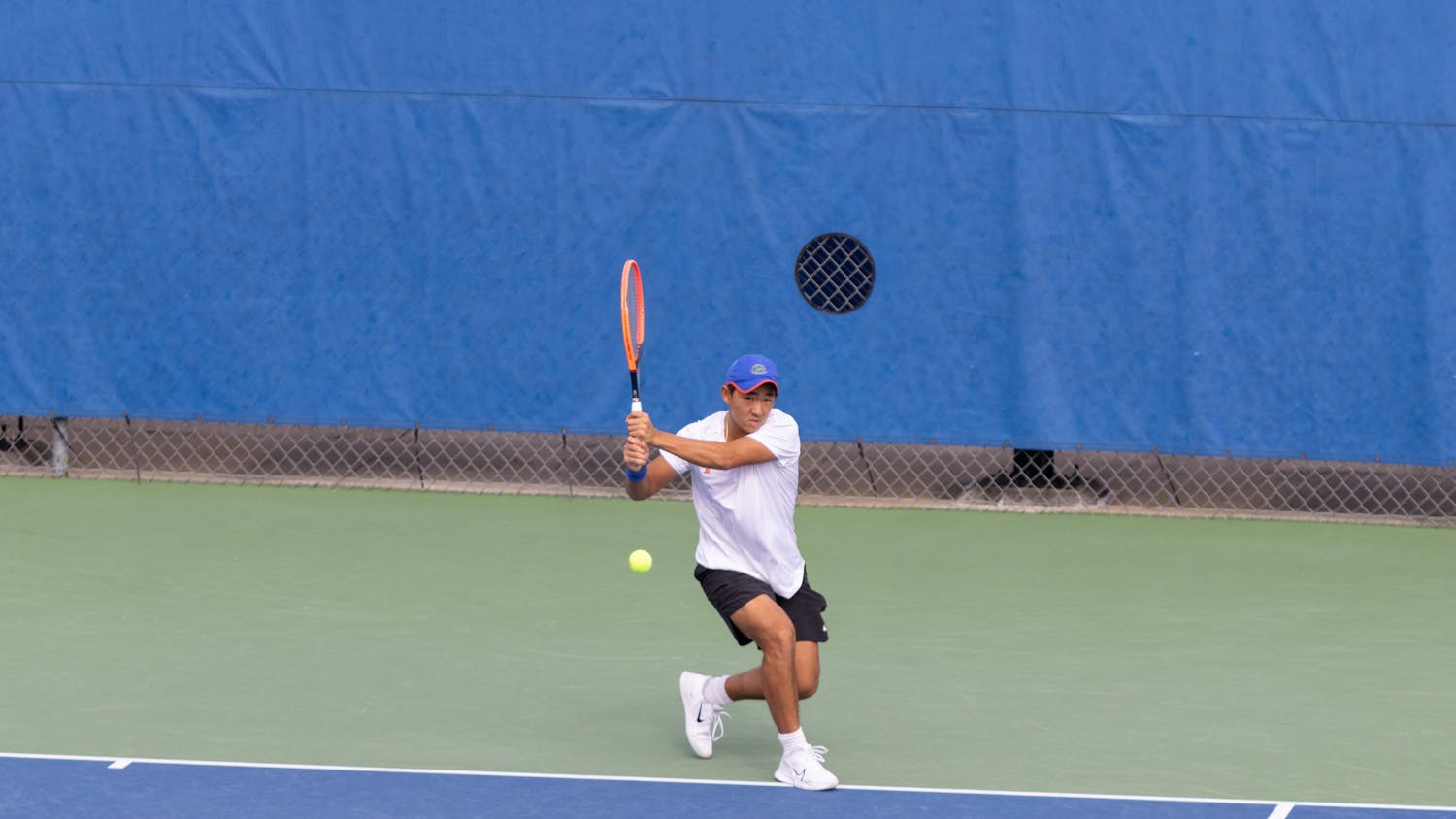Two years ago, Mary Wise couldn’t believe her eyes.
The football team’s annual spring game was set for later that day. Fans poured in for their first taste of football (and tailgating) since the previous fall. The bumper-to-bumper traffic returned to Gainesville for a day.
In the southwest corner of campus, some cars pulled off Hull Road, and it wasn’t just because they wanted to get out of the gridlock.
They were curious about what was going on at the small complex next to Southwest Recreation Center. Surrounded by a green chain-link fence, a sea of sand was occupied.
The makeshift “beach” was divided into six sections, each with a net down the middle. The players wore jerseys with familiar colors.
The fans had stumbled upon sand volleyball, and they weren’t turning away. Eleven of the 12 teams in the Southeastern Conference (Vanderbilt doesn’t have a volleyball program) were present for the first-ever beach volleyball tournament held by a Division-I conference.
“If we were playing an indoor game and had all the doors open in the O’Connell Center, I’m still not sure people would be stopping by,” said Wise, who has led UF’s indoor volleyball program since 1991.
On Saturday, UF will compete in the third annual SEC Coaches Beach Volleyball Championship as part of the Fiesta on Siesta Key.
In two years, fans in various locations of various weather (but likely not Gainesville) will be watching the same sport at a Division-I level.
The movement for sand volleyball began in December 2005 with the meeting of two men in need.
Billy Stone was preparing to produce CSTV’s made-for-TV event in April entitled the Collegiate Nationals. The event intended to crown “champions” for several sports that aren’t NCAA-sanctioned, such as snowboarding and boxing.
He selected five sports, and he’d soon realize the choice for No. 6.
After wrapping up coverage of the indoor volleyball season, the game stuck in Stone’s mind. He placed a call to the Association of Volleyball Professionals (AVP). He found an eager ear in Al Lau, the AVP’s vice president of sports development and new media. One of his goals, unbeknownst to Stone, was to improve the developmental pipeline and increase exposure of beach volleyball to younger ages.
Lau had thought about developing a college beach event but needed a media sponsor. Stone needed the right mix of sports to attract viewers for the Collegiate Nationals. A partnership was hatched, and beach volleyball was added to the Collegiate Nationals. The sport is still part of the event (now called the Alt Games and run by CBS College Sports).
Besides switching names, the Collegiate Nationals has undergone another major format change.
In 2006, the inaugural year, the event invited players who had finished their college eligibility to Los Angeles for an AVP combine. Eight were selected to go to Reno, Nev., and play in a tournament as individuals. The following year, Stone and the AVP brought in the American Volleyball Coaches Association as a third partner in the project.
Kathy DeBoer, the executive director of the AVCA, remembers being approached. She polled schools on possible interest and found tremendous support. DeBoer suggested the event model itself after formats used in Olympic and pro beach volleyball: two-woman teams with each pair from the same school.
The event proceeded in this format since then, inviting eight schools to participate.
Former Gators Marcie Hampton and Angie McGinnis competed in the Collegiate Nationals in 2007, the first year of the new format. Hampton and McGinnis were seeded sixth among the eight pairs and won one match while losing two, failing to advance to the semifinals.Despite being one of the best players in UF history and growing up in Gainesville, Hampton didn’t have any sand volleyball experience.
“That was sort of the way of the world at that time,” Wise said.
Kerri Walsh knows a little something about that world.
Despite growing up in Northern California and having a fierce passion for volleyball, Walsh never found her way onto a sand court until she was 22 and out of college.
Then again, beach volleyball only became an Olympic sport in 1996, Walsh’s first year of college.
She had a decorated career at Stanford (1996-99), where she became the second four-time first-team All-American in the sport’s history.
She competed on the U.S indoor team that finished fourth at the 2000 Sydney Olympic Games. She felt burnt out. Playing professionally indoors would’ve meant a move overseas, as the U.S. had no such option.
And Misty May (now Misty May-Treanor) was looking for a partner.
She and Walsh hit it off well.
They are widely considered to be the best beach volleyball duo of all time and won gold at the 2004 and 2008 Olympics. They won 89 straight matches in AVP and international competition during 2003-04. They have garnered Team of the Year honors on the AVP the past five seasons, and Walsh has been a two-time AVP MVP (2003, 04).
Despite an illustrious career, Walsh said she would’ve been an even better indoor player growing up had she ventured onto the sand.
She had been afraid. Afraid of the very sand that drew tourists to California’s beaches.
“I consciously avoided it because I knew I’d be terrible,” Walsh said. “I let my ego get in the way of me trying it because the sand really intimidated me.”
Walsh is excited about the sand having a place in college. She thinks she would’ve tried to play indoor and sand if it were available during her collegiate days.
She also sees it being a hit.
“You have the demand for it. You have the athletes for it,” Walsh said. “The corporate world will take notice of it.”
Check out Wednesday’s Alligator for part two, including why three-time defending NCAA indoor champion Penn State asked for a vote to kill the sport and why UF might not have a sand volleyball team for awhile.





